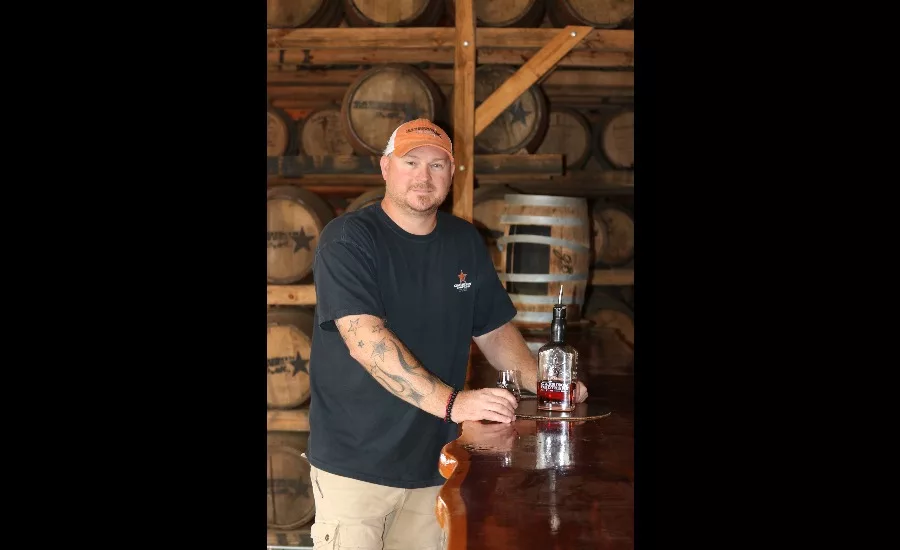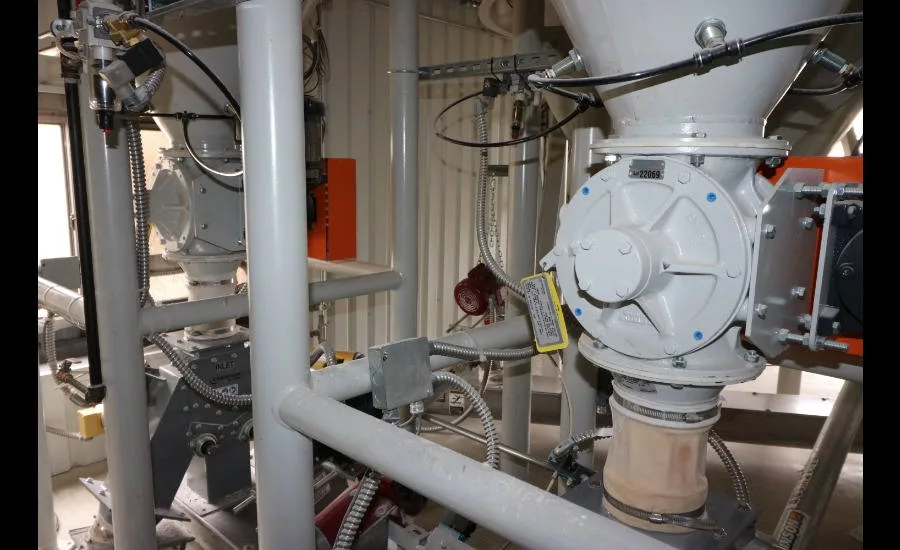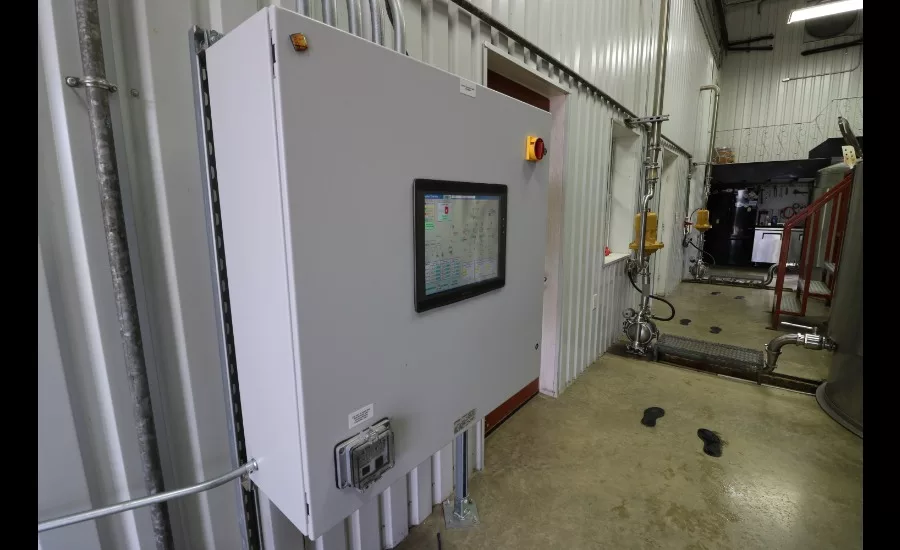Field Reports
Artisanal bourbon distillery supports its growth with top quality grain handling system




Founded in 2006, the award winning Garrison Brothers Distillery in Hye, Texas, defines itself as the “first legal whiskey distillery in Texas history, and is one of the first distilleries in America outside of Kentucky to produce authentic, handmade bourbon whiskey and only bourbon whiskey.”
The dedication and passion of Garrison Brothers to produce artisanal bourbon has resulted in an increase in popularity, substantial growth and subsequently a requirement to increase production.
Garrison Brothers prides itself on producing a unique wheated bourbon using locally sourced and organic ingredients, some of which are grown right on the distillery property. Each batch of handcrafted bourbon utilizes the finest raw materials, and keeping true to that culture, Garrison Brothers expected no less from the system that would supply those raw materials to the process.
In spring of 2018, Garrison Brothers contacted Coperion K-Tron’s local representative and resident grain handling expert, Robert Petrin of Shamrock Systems Inc., to help upgrade its current grain handling system. Petrin turned to the system experts at Coperion K-Tron to help design a completely automated system that would enable Garrison Brothers to quadruple its production.
Building a vacuum sequencing system
The Coperion K-Tron system uses vacuum sequencing to pull raw materials, such as corn, wheat or barley, from existing silos direct to a pneumatic receiver mounted above an existing hammer mill. Once the ingredients are milled to a precise particle size distribution, another vacuum line picks up the milled product and conveys it to one of several scale weigh hoppers.
The design engineers at Coperion K-Tron worked within an extremely tight technical space to make sure that the weigh hopper systems were ergonomically accessible but still optimized in position to continue to allow room for the customer tours that Garrison Brothers does daily through the mash room.
The scale hoppers are all designed with specialty Coperion K-Tron vacuum sequencing receiver filter sections and sequencing valves, as well as fluidizing pads to keep the material fluid while discharging the weigh hoppers.
The use of multiscale weigh hoppers gives the added versatility for capacity and ingredient recipe changes. Once weighed, the raw materials are discharged via Coperion K-Tron rotary airlocks and then through specialty diverter valves into multiple screw conveyors that are directed to one of two 500 gallon kettles, or an additional 1,000 gallon kettle. The system is controlled by an overriding PLC control system, which allows a single operator to modify the recipe as needed and control the increased output from the mash kettles.
 |
|
The Coperion K-Tron pneumatic receiver (right) pulls raw barley, wheat or corn from silos and delivers it to a hammer mill. Multiple modified scale weigh hoppers (left) receive the milled ingredients and provide necessary filtration, as well as versatility for capacity and ingredient recipe changes. |
How vacuum conveying works
Vacuum conveying is the process of moving bulk dry ingredients from the silos to within the mash room using suction. The material is transferred in a network of tubing from the silo pick up point to the hammer mill inlet, and then again from the outlet of the hammer mill to the scale hoppers.
Vacuum sequencing receivers can be designed for either “keep full” or “feeder refill” operation. Keep full receivers, including the one used by Garrison Brothers, are designed to keep the hopper below each receiver full. This type of receiver is equipped with a gravity discharge gate. When the service cycle ends, the weight of the material inside the receiver causes the discharge gate to open. The receiver is either equipped with a level switch, as integral to the gravity discharge gate assembly, or a secondary level switch that is mounted in the hopper below the receiver.
When the gravity discharge gate is in the almost closed position or a signal from the secondary level indicator is detected, a call for material is established. Conversely, vacuum receivers that are designed as feeder refill type receivers are designed to either immediately dispense the receiver’s contents or hold the material in the vessel until a signal is received to discharge. This type of receiver is equipped with a powered discharge gate. When material has dropped below the level switch in the receiver, the receiver establishes a call for material.
Upon receiving a signal from the equipment below the receiver, the discharge gate will open for a set time duration as long as the refill signal is constantly present. The discharge time is adjustable. When the discharge time has lapsed or the refill signal is removed, the discharge gate will close. Upon receiving the closed signal from the discharge gate, the receiver will resume the call signal.
Both types of vacuum sequencing receivers include filters with reverse jet cleaning and programmable cleaning cycles. These cycles include cleaning during fill, after fill, during discharge or a combination. This greatly reduces manual filter cleaning and makes the unit ideal for handling a wide variety of materials.
Batch weighing with scale hoppers
Scale hoppers are receiving hoppers suspended on load cells for ingredient batch weighing. A variety of systems are available for batch weighing of pneumatically conveyed food ingredients, whether the application requires a single ingredient to be delivered to multiple destinations or multiple ingredients to be delivered to a single destination.
The material resides in the scale hopper until the precise weight and/or combination of materials is achieved. With the scale weighing system, ingredient accuracies of +/- 0.5% of the full scale capacity can be expected. After accurate weighing, the process then calls for material, a butterfly valve opens and the material in the scale hopper is discharged.
Vacuum sequencing receiver filter sections
The vacuum sequencing receiver filter sections located on each of the scale weigh hoppers provide excellent air filtration of fine airborne particles within the scale weigh hopper and allow clean air to return to the vacuum blower. While materials are pneumatically conveyed into the scale hopper, fine particles are efficiently separated by the unit’s large cartridge filter. This enables clean air to pass from the tank back to the vacuum blower and then out to atmosphere.
Reverse jet cleaning from a compressed air accumulator pulses the cartridge filter, dislodging any fines and returning them to the scale weigh hopper. The sequencing valve on each receiver dictates which receiver is serviced with material.
Automated control system
The PLC-based control system provided includes a variety of features inclusive of recipe control. The system includes system operational sequence logic as well as critical and status alarm logic. A color HMI touchscreen includes a system status overview screen, the recipe database screen and alarm/event history screens. In addition, manual control screens are also included with pop-up faceplates that allow the operators to manually control individual system devices outside of automatic system control.
Optimal material handling
Garrison Brothers’ distinctive mission statement begins, “We are a family of bourbon makers and bourbon lovers, fully committed to proving that the finest bourbon whiskey on the planet will be born in the Texas Hill Country.” This history and dedication to creating quality product for a valued customer base is evident in the company’s commitment to maintaining excellence even while experiencing production growth.
The continued emphasis on food safety and product quality, and the company’s subsequent partnership with Coperion K-Tron, has resulted in optimal material handling, dry ingredients addition and process automation.
As clearly stated by Garrison Brothers master distiller Donnis Todd, “These modifications have allowed us to quadruple the production, going from a 500 gallon batch to a total of 2,000 gallons/batch. The control system for the grain handling operation provided by Coperion K-Tron has allowed us to maintain the complete mash room operation with just one operator. The service and expertise provided by both Robert Petrin and the Coperion K-Tron system engineering team has been invaluable for our growth, and has resulted in a true partnership.”
Looking for a reprint of this article?
From high-res PDFs to custom plaques, order your copy today!





